These shirataki sesame noodles are incredible. They are delicious, easy to make, and very close to the real thing.
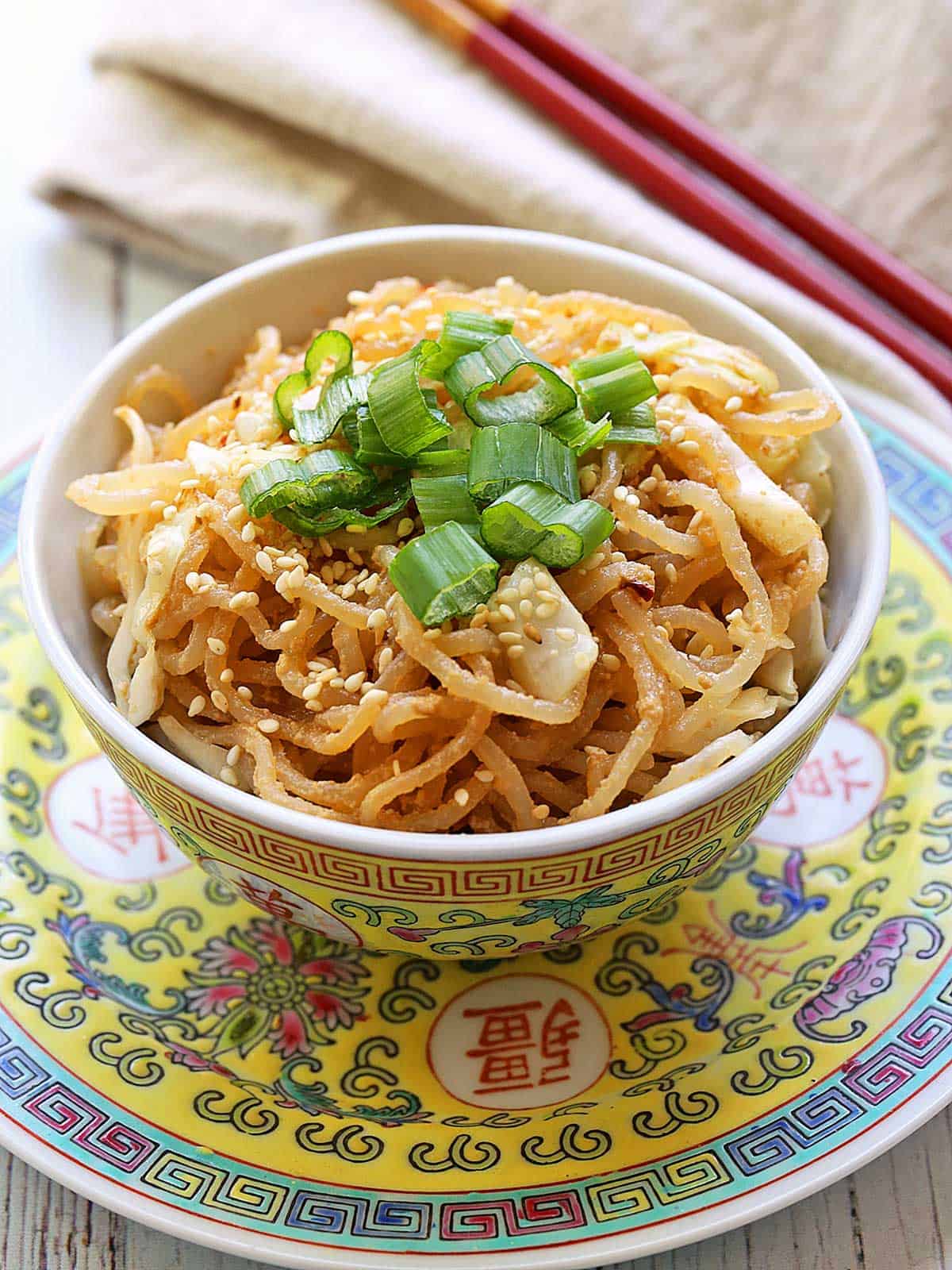
When prepared correctly, shirataki noodles are a wonderful low-carb and gluten-free alternative to noodles and pasta. I usually prepare buttered shirataki noodles, but these sesame noodles are a delicious Asian-style variation. They're incredibly flavorful and filling.
Ingredients

See the recipe card for exact measurements. Here are my comments on some of the ingredients.
- Shirataki noodles: I use angel hair noodles in this recipe.
- Tahini: Also labeled as "sesame paste." The only ingredient is ground sesame seeds.
- Soy sauce: I use reduced-sodium soy sauce. You can use a gluten-free alternative.
- Rice vinegar: If you don’t have any on hand, it’s OK to use white wine vinegar. I don’t recommend using plain distilled vinegar. It’s too acidic.
- Shredded cabbage: To make life easy, I use a bag of pre-washed and shredded cabbage. If you shred it yourself, shred it finely so that it mixes easily into the noodles.
- For garnish: Toasted sesame oil, toasted sesame seeds, and chopped scallions. But these are not just for garnish - they add great flavor (espacilaly the oil), and the scallions also add a pop of color to the finished dish.
Variations
- Use natural creamy peanut butter instead of tahini.
- Mix a cooked protein into the finished dish to turn it into a complete meal. Try cooked shredded chicken or tiny cooked shrimp.
- Top the noodles with a couple of fried or poached eggs. This is another delicious way to turn them from a side dish into a complete meal.
Instructions
The detailed instructions and step-by-step photos are included in the recipe card. Here's a quick overview.
Rinse the noodles and drain them. Toast the drained noodles in a dry skillet.
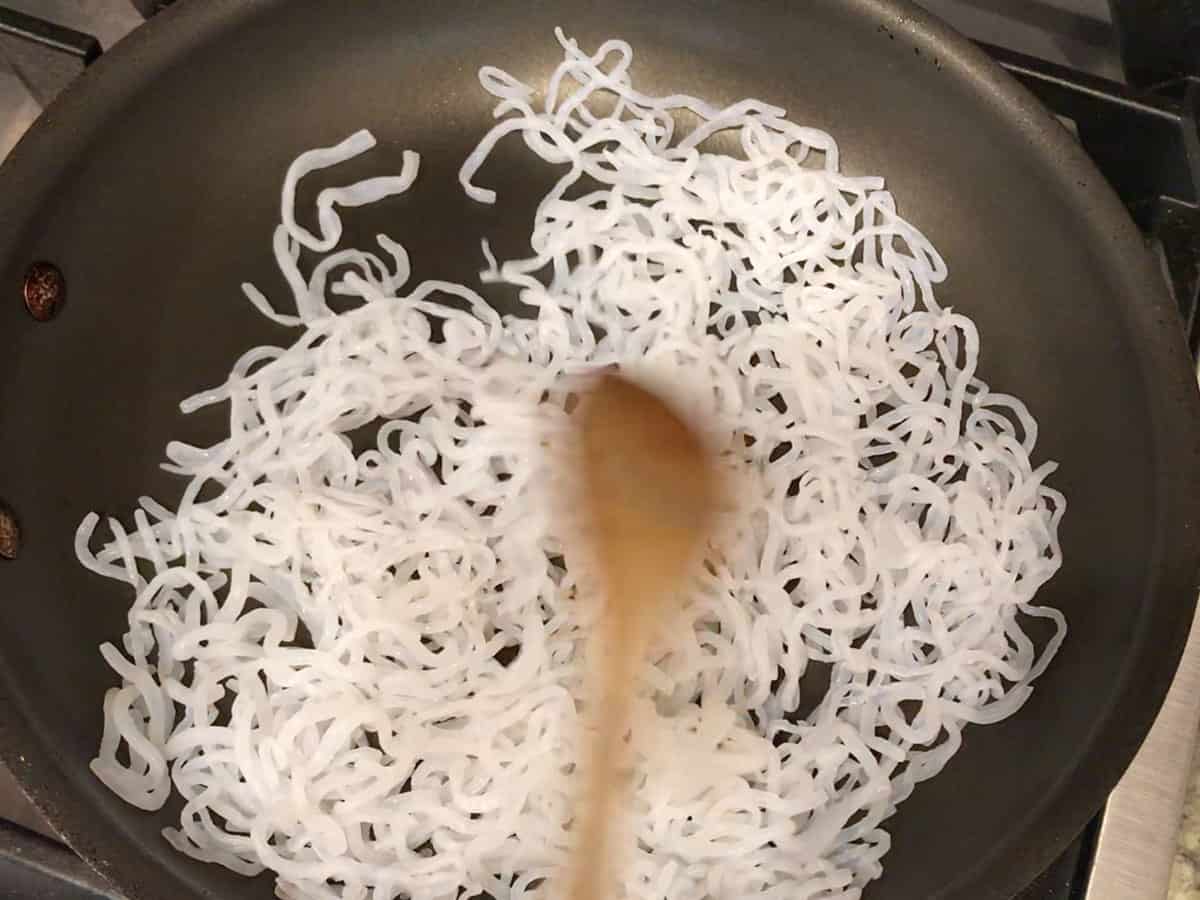
Combine the sesame paste, soy sauce, rice vinegar, and red pepper flakes. Add this mixture and the cabbage to the noodles. Stir to coat.
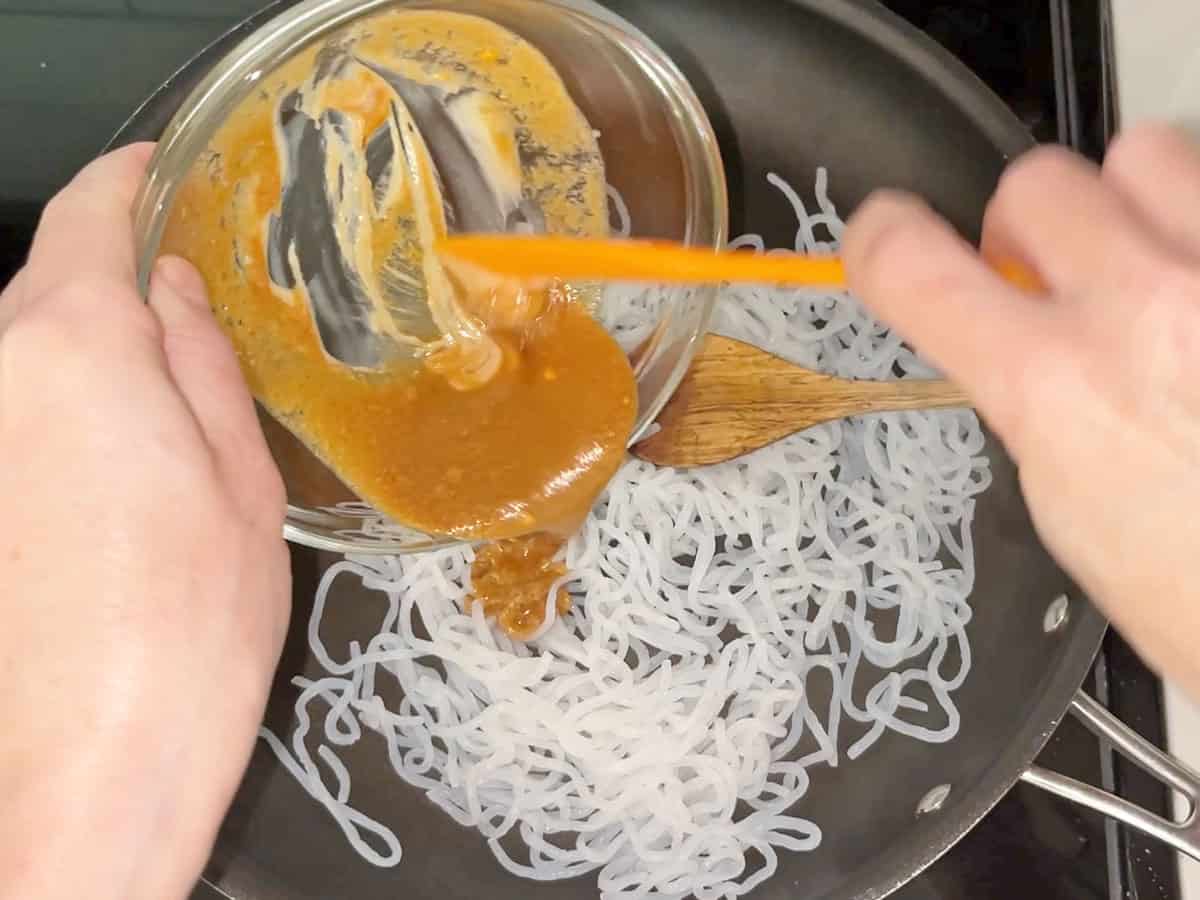
Transfer the noodles to a plate or a bowl. Top them with the sesame oil, sesame seeds, and scallions, and serve.
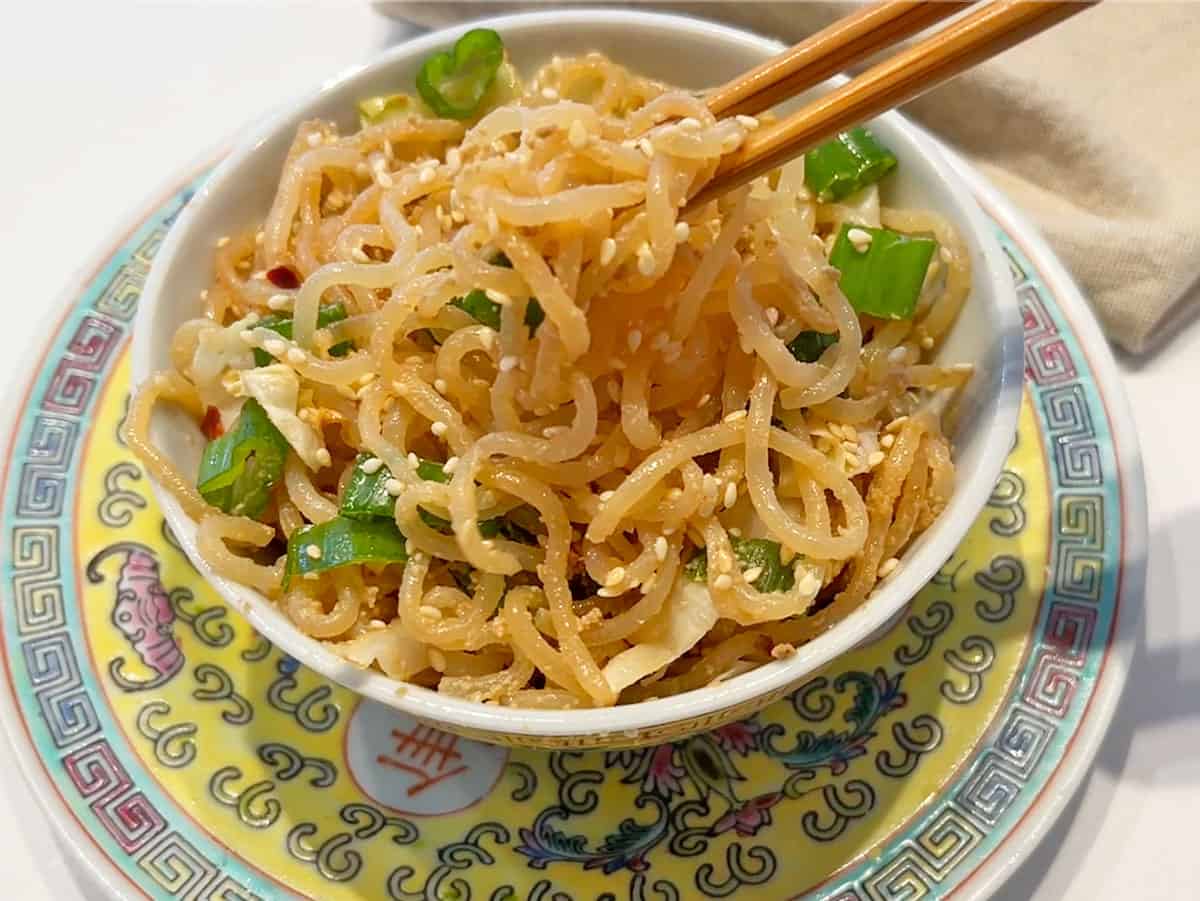
This is a brilliant recipe. Delish, super easy to make and takes less than 10 minutes.
Ray
Read more comments
Recipe Tips
- Right out of the package, these noodles have a texture that's very different than regular noodles and a fishy smell. But don't be afraid of them! After rinsing and dry-roasting, they become very palatable.
- When I started making this recipe in 2014, the noodles' instructions included briefly boiling them. As I edit this recipe in 2025, that step is no longer included, so I removed it from my recipe, too. You can still see me doing it in the recipe video.
- Storage: You can keep the leftovers in an airtight container in the fridge for up to 4 days. Reheat them gently in the microwave at 50% power or enjoy them cold.
Serving Suggestions
Any Asian-style main dish is great with these noodles. I often serve them with Asian salmon, Asian meatballs, teriyaki salmon, or sesame shrimp.
They're also good all on their own for a light meal, especially for lunch. And unlike regular pasta, they're truly filling, even when eaten without protein. However, feel free to add a protein source such as grilled shrimp or shredded grilled chicken breast.
Recipe Card
Shirataki Sesame Noodles
Video
Ingredients
- 7 ounces angel hair shirataki noodles
- 1 tablespoon tahini
- 1 tablespoon light soy sauce - or a gluten-free alternative
- 1 teaspoon rice vinegar
- ⅛ teaspoon red pepper flakes
- 1 cup cabbage - finely shredded; 2.5 ounces
- 1 teaspoon toasted sesame oil
- 1 teaspoon toasted sesame seeds
- 1 large scallion - chopped; green part only
Instructions
- Open the shirataki noodles package. Pour its contents into a colander. Ignore the slightly fishy smell - it will rinse out. Rinse the noodles under cold running water for 30 seconds.
- Heat a clean, dry, medium-sized nonstick skillet over medium-high heat.
- Pour the cooked noodles back into the colander and drain well. Transfer the noodles to the hot skillet and dry-roast them (adding no oil to the skillet), stirring, for 1-2 minutes, until they are visibly dry and make a squeaking sound when moved in the skillet. This step will get rid of the shirataki's rubbery texture and help the noodles better absorb the sauce.
- While the noodles are dry-roasting, use a fork to combine the sesame paste, soy sauce, rice vinegar, and red pepper flakes in a bowl. Add the mixture to the dry noodles in the skillet (use a small rubber spatula to scrape it all off the mixing bowl) along with the shredded cabbage. Stir-fry until the noodles and cabbage are thoroughly coated, 1-2 minutes.
- Turn the heat off. Transfer the noodles to an individual bowl. Drizzle them with toasted sesame oil and top them with sesame seeds and chopped scallion. Serve immediately.
Notes
- When I started making this recipe in 2014, the noodles' instructions included briefly boiling them. As I edit this recipe in 2025, that step is no longer mentioned, so I removed it from my recipe, too. You can still see me doing it in the recipe video.
- Right out of the package, these noodles have a texture that's very different than regular noodles and a fishy smell. Don't let that deter you! After rinsing and dry-roasting, they become very palatable indeed.
- Shirataki noodles are not for everyone. I suggest you start with a small amount and pay attention to how they affect you, digestively speaking.
- You can keep the leftovers in an airtight container in the fridge for up to 4 days. Reheat them gently in the microwave at 50% power or enjoy them cold.
Nutrition per Serving
Save this Recipe!
We will also add you to our weekly newsletter. Unsubscribe anytime. See healthyrecipesblogs.com/privacy/ to learn how we use your email.
Disclaimers
Most recipes are low-carb and gluten-free, but some are not. Recommended and linked products are not guaranteed to be gluten-free. Nutrition info is approximate. Please verify it independently. The carb count excludes non-nutritive sweeteners. Please read these Terms of Use before using any of my recipes.

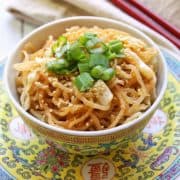
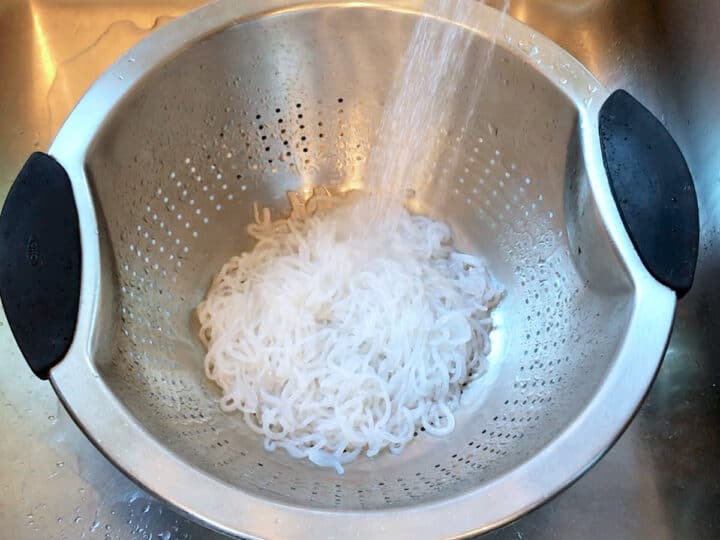
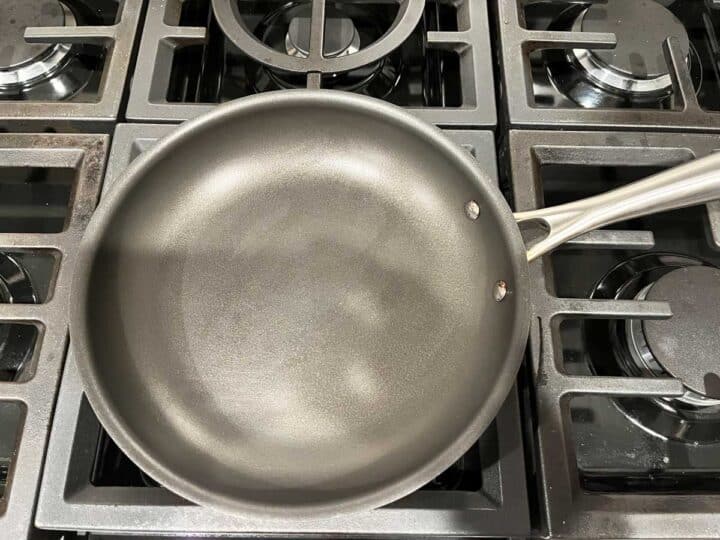
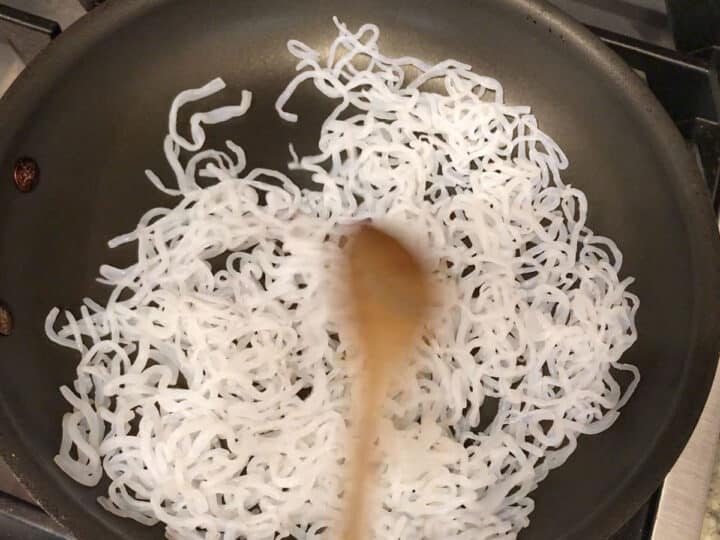


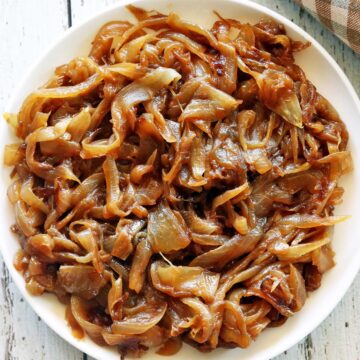
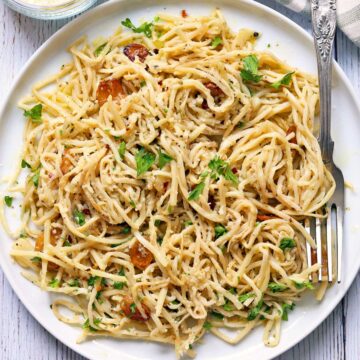
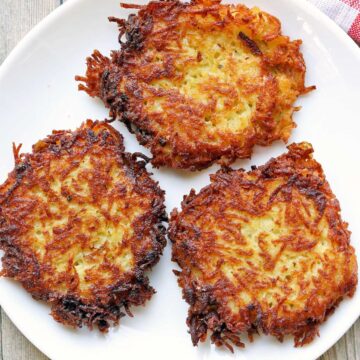
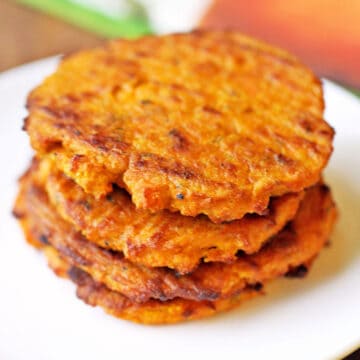
Vee says
This was delicious and easy to make. I have made it a dozen times already. Thank you!
Vered DeLeeuw says
I'm so glad to hear that, Vee! Thank you very much for the review.
Vee says
Made it twice and it was so yummy. I did not have any digestive issues. I paired it with 4 oz of salmon. Thank you!!
Vered DeLeeuw says
Wonderful, Vee! I'm so glad you enjoyed this recipe. Salmon sounds like the perfect addition!
ray says
This is a brilliant recipe. Delish, super easy to make and takes less than 10 minutes.
I am not certain that boiling the noodles first is necessary, given that they do not require cooking. I skipped that step but I am sure no harm could be done by doing it!
Vered DeLeeuw says
Glad you liked these noodles, Ray! Thank you very much for the review. These noodles used to require boiling (I've been making them since 2014). You're correct that the new packages do not include this step, so I'll go ahead and remove it from my recipe.
Kate says
At last, a way that I can eat Konjac noodles. In the past, I found them inedible, but these were actually, dare I say it… Nice and enjoyable!!! Never thought I’d say that. So thank you!
Vered DeLeeuw says
Yay! I'm so glad you enjoyed these noodles, Kate! Thanks for leaving a comment.
Jeffie says
Thank you for this recipe! People ask for my cold sesame noodles at parties. They aren't low-carb. as I begin my low-carb journey, I want to bring these to several parties. Are these sesame noodles good cold? Jeffie
Vered DeLeeuw says
Hi Jeffie,
Yes, they are. My only caveat is that shirataki noodles can cause digestive distress in some people.
Marianna says
I have never enjoyed eating shirataki noodles before trying your recipe. Thank you for teaching me how to turn these noodles to a great tasting Asian noodle!! The recipe is wonderful! I can enjoy eating sesame noodles once again.
Vered DeLeeuw says
I'm so glad you enjoyed this recipe, Marianna! Being able to enjoy old favorites is priceless.